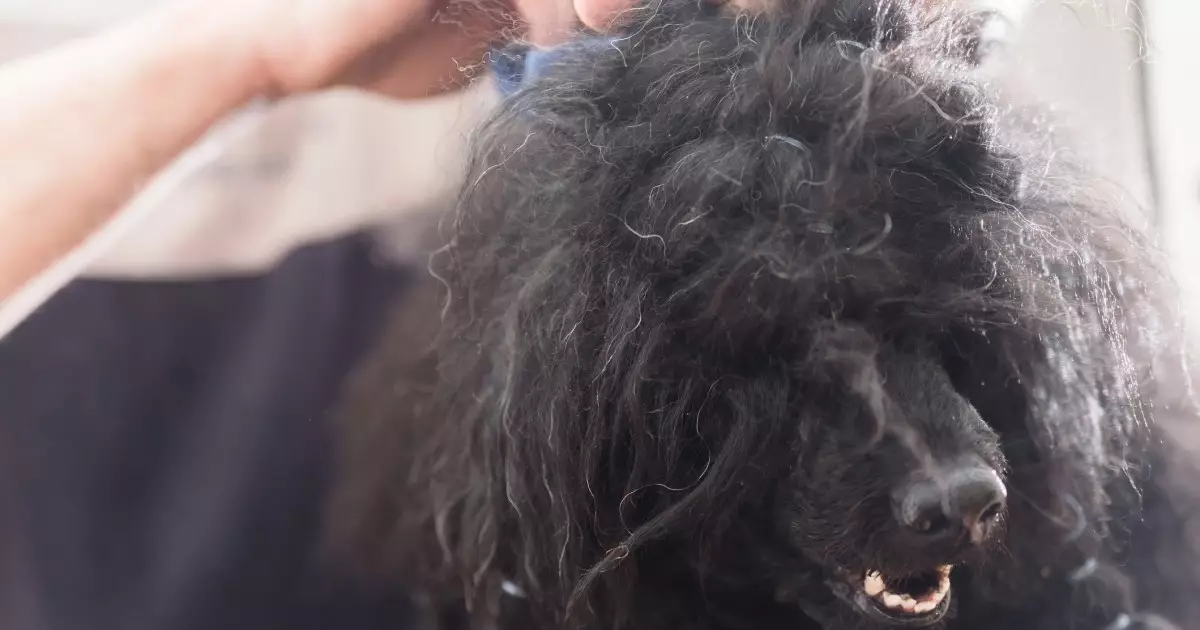Maintaining your dog’s coat is not just about aesthetics; it is integral to their overall health and happiness. One of the significant challenges many dog owners face is the problem of matted fur. This condition not only affects the appearance of a dog but can also lead to discomfort, pain, and even health complications if left untreated. In this article, we’ll explore the causes of matted fur, the breeds most at risk, preventive measures to keep your pet’s coat healthy, and how to effectively deal with mats when they do occur.
The Anatomy of Matted Fur
Matted fur occurs when a dog’s hair becomes tangled and knotted, forming clumps that create a cumbersome and uncomfortable layer. Matting can happen for several reasons, and understanding these can empower pet owners to take proactive steps.
Primarily, matted fur can be attributed to insufficient grooming. Dogs with longer or curly coats are particularly vulnerable due to the nature of their fur, which can trap loose hairs and debris when not groomed consistently. Over time, this neglect results in the formation of mats, which can worsen with exposure to moisture and dirt. When dogs play outdoors, they often pick up mud, sand, or even leaves, exacerbating the matting issue.
Underlying health conditions can also contribute to matting. Issues like skin allergies or excessive shedding can lead to more loose hair accumulating in the fur, making it easier for knots to form. Knowing your dog’s health status is crucial in preventing mat-related issues, and veterinary consultations can provide further insights.
Certain dog breeds are predisposed to matting due to their coat’s texture and length. Long-haired breeds such as Yorkshire Terriers, Shih Tzus, and Poodles often require more diligent grooming than shorter-haired breeds. Similarly, those with curly coats may need additional attention to keep their coats free of tangles. Understanding your dog’s breed characteristics is essential for setting a grooming routine that meets their unique needs.
Effective Grooming Strategies
Preventing matting in your dog’s fur is a manageable task when approached with the right strategies. Here are several methods to consider:
1. **Regular Brushing**: Establish a brushing routine tailored to your dog’s coat type. For dogs with long or curly hair, daily brushing is recommended. This ensures that loose hairs are removed before they can become entangled.
2. **Choose the Right Tools**: Invest in high-quality grooming tools specific to your dog’s coat type. Brushes, combs, and de-matting tools designed for various fur textures can make a significant difference in maintaining a tangle-free coat.
3. **Proper Drying After Baths**: Be thorough when drying your dog’s coat post-bathing or swimming. Any residual moisture can lead to tangling and matting, so ensure the fur is completely dry.
4. **Regular Professional Grooming**: Schedule routine appointments with a professional groomer. A skilled groomer can provide services like trimming and deshedding, helping to prevent mats from forming, especially in high-risk areas such as behind the ears or beneath the legs.
Despite best efforts, mats can still occur. When faced with matted fur, it’s essential to handle the situation carefully to avoid causing discomfort to your dog. Here are some effective approaches:
– **Gentle Handling**: Always be gentle when trying to detangle mats. Tugging can cause pain, so it’s best to use a soft touch.
– **Use Detangling Sprays**: Applying a dog-safe detangling spray on the matted areas can help soften the fur and make it easier to work through the tangles.
– **Start from the Edges**: Focus on the outer edges of the mat first, gently working inward. This gradual approach minimizes discomfort and helps to loosen the knots.
– **Employ Your Fingers**: In delicate areas, your fingers can act as the best tool for untangling. This method allows for careful handling while being less obstructive to your pet.
– **Offer Rewards**: Use treats and positive reinforcement to create a stress-free grooming experience.
Some cases of matting are beyond what can be managed at home. If you encounter severe mats—especially around sensitive areas like the eyes, ears, or genital regions—it may be time to seek help from a professional groomer. Additionally, if your dog experiences anxiety during grooming sessions, a groomer’s expertise can provide a more calming experience for your pet.
While dealing with matted fur can be a daunting task for dog parents, being proactive through regular grooming and understanding your dog’s specific needs can alleviate much of the stress. By following the preventive tips and knowing how to properly deal with mats when they occur, you can keep your dog’s coat healthy, beautiful, and tangle-free. Remember, when in doubt about handling mats or promoting coat health, don’t hesitate to consult a professional groomer to ensure your pet remains comfortable and happy.

